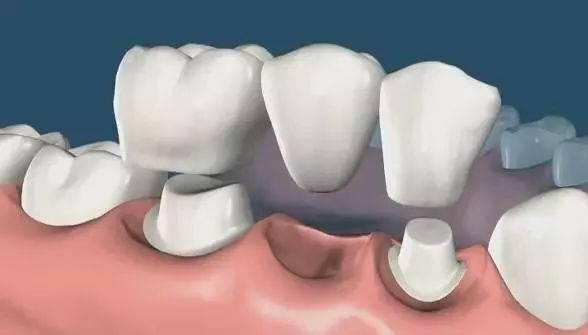If you want to replace your missing teeth, you’ll be looking for a replacement that will look and function properly like real teeth. Dental crowns and bridges are popular restorative dental treatments that help replace missing teeth for better oral function and aesthetics. But how long should these dental Crowns and Bridges last? In this we’ll explore the factors that determine the longevity of a crown and bridge, as well as tips to increase their lifespan. So, let’s dive in!
What are Crowns and Bridges:
A dental crown is a custom-made cap that fully covers a damaged or decayed tooth. It helps to restore the tooth’s strength, shape, and appearance. On the other hand, Bridge is used to replace one or more missing teeth. A dental bridge just like its name (bridge), has two crowns on either side and replace teeth that rest or stand in the area of the gums where there is tooth loss.
Factors Affecting Crown and Bridge Lifespan
There are several Factors Affecting the Crown and Bridge. These factors include:
1: Material Quality: High-quality crown materials, properly fabricated and bonded, tend to have better durability and longevity. Crowns and bridges can be made from various materials such as porcelain-fused-to-metal, zirconia, all-ceramic, or metal alloys.
2: Oral Hygiene: Maintaining good oral hygiene is very important to ensure the longevity of your Crown and bridge. Maintain brushing twice daily for at least two minutes with an electric toothbrush, use of water flosser and dental flossing. Make use of antibacterial mouthwash too as it helps prevent plaque buildup, gum disease, and decay around the crown and bridge.
3: Occlusion (Bite): An improper bite can put excessive stress on the crown and bridge, leading to premature failure. It is important to have your Crown and Bridge carefully adjusted by a skilled dentist to ensure proper alignment and occlusion.
4: Habits and Lifestyle: Certain habits, such as teeth grinding (bruxism) or using teeth as tools for opening packages, or bottle openers can put undue stress on the crown and bridge. Avoiding such habits can significantly prolong their lifespan.
How Long Can Crown and Bridge Last?
While the lifespan of a crown and bridge can vary based on individual circumstances, on average, they can last between 10 to 20 years or even longer. However, with proper care, maintenance, and regular dental checkups, it is not uncommon for well-maintained crowns and bridges to last 30 years or more.
How to Care for Your Crown and Bridge.
1: Maintain Good Oral Hygiene: Brush your teeth twice a day for two minutes with a soft-bristled electric toothbrush. Make use of a water flosser at least once a day, floss daily, and use an antibacterial mouthwash to rinse your mouth too.
2: Avoid Damaging Habits: Refrain from chewing on hard objects like ice or using your teeth as tools. If you grind your teeth, consider wearing a nightguard to protect your restorations while you sleep. Clean the mouth guard properly with an ultrasonic cleaner.
3: Regular Dental Check-ups: You should not forget to visit your dentist at least twice a year for routine check-ups. The dentist will assess the condition of your crown and bridge, identify any signs of wear or damage, and take preventive measures to address them immediately.
4: Avoid Teeth-Staining Substances: Some substances like tobacco, coffee, tea, and red wine can stain the materials used in crowns and bridges, affecting their appearance. Minimize the intake of such substances or use a water flosser to flush out every particle after taking it.
5: Protect Your Teeth During Physical Activities: If you participate in contact sports or activities that pose a risk of dental injury, wear a mouthguard to protect your teeth and restorations from potential damage.
6: Regularly Assess Your Restoration: Keep an eye on the condition of your crown and bridge. Look for any signs of discolouration, roughness, or changes in the fit. Early detection of issues can help prevent extensive damage and increase the lifespan of your crown and bridge or any other restoration in your mouth.
Conclusion:
The longevity of a crown and bridge depends on various factors, including material quality, oral hygiene, occlusion, habits, and maintenance. While the average lifespan ranges from 10 to 20 years, proper care and regular dental visits can significantly extend their longevity.
By following good oral hygiene practices, addressing issues promptly, and adopting habits that protect your restoration, you can increase the lifespan of your crown and bridge. These give you a confident smile and optimal oral health for years to come. Remember to consult your dentist for personalized advice and guidance regarding the care and maintenance of your specific crown and bridge.

